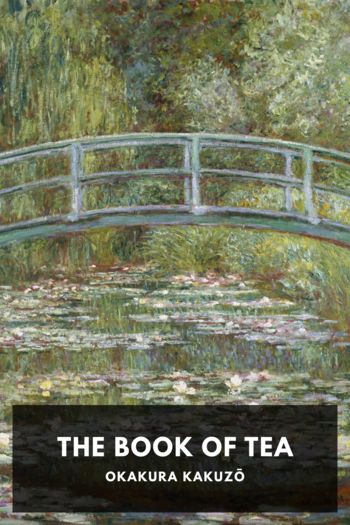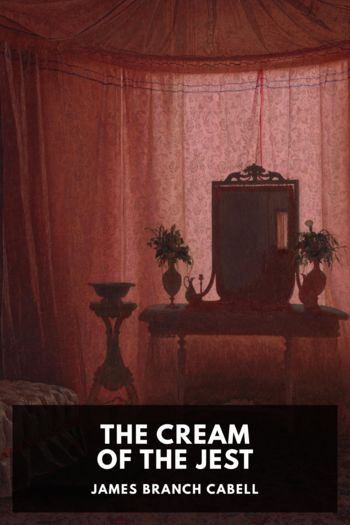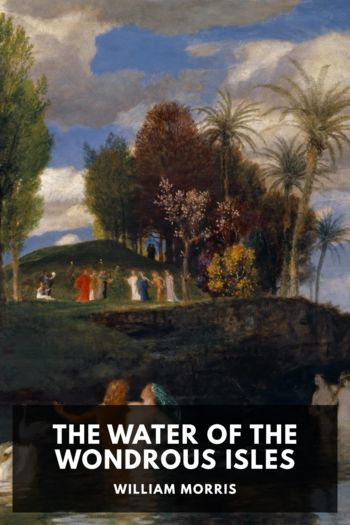Chocolate Sarah Moss (best fantasy books to read .txt) 📖

- Author: Sarah Moss
Book online «Chocolate Sarah Moss (best fantasy books to read .txt) 📖». Author Sarah Moss
Amedei’s single-estate grand cru bar from Venezuela’s famed Chuao estate.
The Cru originate from individual production areas and, just as the grapes that flourish under a particular sun and from a specific soil, they have a marked personality and a decisive flavour. They are the most immediate and ‘savage’ expression of cacao. The individual plantations of origin interpret the genetic diversity of the cacaos existing today, from the beans which best highlight the characteristics of each plant type, selected, cultivated and processed in accordance with strict discipline in the countries of origin.
These ideas of genetic and local particularity spill over into more romantic and touristic visions of chocolate as the essence of ‘savage’ realms. Elsewhere Alessio Tessieri of Amedei writes: ‘I feel the greatest, most beautiful sensations when I discover a virgin plantation, never visited by any westerner: I immediately think of how to transform it into a taste or an emotion to bring the perfume, and the atmosphere of that land to whomever tastes the chocolate.’
Producers of organic chocolates like the pioneering firm Green & Black’s have also long sought to label the origins of their chocolate as a means of transparency as well as to capture such ideas of terroir and tradition. Even the US giant Hershey has recently joined the new fashion for organic, single-source chocolate with its ‘Cacao reserve’ line. Following the labelling conventions of high-end chocolate, labels for new line, laid out in ‘portrait’ not ‘landscape’ format, list prominently the location and cocoa percentage (although among true connoisseurs, this latter knowledge is now peripheral). In contrast to these various single-source chocolates, the products of West Africa are generally considered poorer quality. Apart from its abundance in the global market, which seldom boosts the status of any food, the fact that West African cacao is more or less exclusively of the forastero variety is the main reason why some experts consider the region a black hole of taste. With that said, however, Bonnat features a Grand Cru from Ivory Coast, and Amedei offers a Grand Cru (albeit from Ecuador) that offers ‘a very rare example of “forester” of great aromatic impact and power’.
Much talk of purity and authenticity is also centred around getting closer to the essence of the bean. One expression of this has been quite literal: several manufacturers now offer bars that contain bits of cocoa nib, so that if one tastes carefully, one can taste the unrefined product. This has alsomeant attempting to revive the once moribund varieties of criollo and trinitario chocolate, particularly in the Americas, but also in Madagascar. The relatively isolated Chuao plantation in Venezuela has become particularly well-known for its historic and apparently ‘pure’ beans. Nowhere is bean lore more obsessive, however, than when dealing with the ‘porcelana’, a rare white criollo found in Venezuela. As Amedei enthuse: ‘Porcelana is a cacao “criollo”. It means genetically pure. It is the “father” of all cocoa.’ Though almost certainly not intended, there are disturbing overtones in the discussions of the ‘genetic purity’ of this ‘white’ criollo – a term itself derived from notions of ‘pure white blood’ in people. Valrhona also wax rhapsodic about the white bean in describing their Porcelana del Pedregal, which is not a bar but a flower-shaped chocolate made from it:
To fully express the flavours ... it was necessary to associate them with a new shape and a new image. A fleeting sensation, but visible for the eye and discernible to the touch, a fragile ephemeral form reminding us that only one in a thousand flowers survives from the mass of blossom springing from the very trunk of the Porcelana trees; its frail petals are offered as a token of its authentic story.
Good chocolate is all about the authentic story. History plays an important role here, too, and like the mass manufacturers, most artisanal producers are keen to tell customers the history of their product. Unlike the histories of chocolate told by the major manufacturers, which are about discovery, innovation and corporate expansion (in short: success), the chocolate histories from connoisseurs are tales of preservation, rescue and redemption. Some of this focuses on thebean and the ‘essence’ of chocolate, which appear as things that were lost through years of mass manufacture and are now being restored to their original essence, flavour and native meaning. Some is to do with the craft of chocolate-making itself. Bonnat points to its artisanal tradition as ‘handed down from father to son’, while Doutre-Roussel points to the revival of older techniques and machinery in a lot of gourmet chocolate-making as essential to finding the essence of the chocolate. She argues that ‘using old machinery, a producer is more likely to treat the beans with the respect they deserve, coaxing as much flavour out of them as possible, allowing them some individuality in their texture.’ For all that they are new products, the message seems to be that they are actually older, more original, than their mass-produced counterparts.
‘Bad’ chocolate, in contrast, is everything that good chocolate is not: sweet, light, impure, placeless, mass-produced, cheap, fattening, addictive. It is a cheap imitation of good chocolate, never mind the fact that ‘bad’ chocolate has been around longer. Whilst stressing the importance of developing one’s own ‘chocolate profile’ derived from an exploration of one’s own tastes, Doutre-Roussel spends most of her book telling readers what they should not like. She is also quite clear about where the blame for the persistence of poor-quality chocolate lies. ‘If customers enjoy and keep on buying chocolate that I would consider to be of inferior quality, then there is little incentive for the melters of couverture to invest in a more expensive chocolate.’ She is also careful, however, to help readers avoid the ultimate bourgeois sin of confusing price with quality. Good chocolate is expensive, but not all expensive chocolate is good. Just like in Brillat-Savarin’s discussions of chocolate from nearly 200 years before, what is necessary on the part of the ‘good’ consumer





Comments (0)